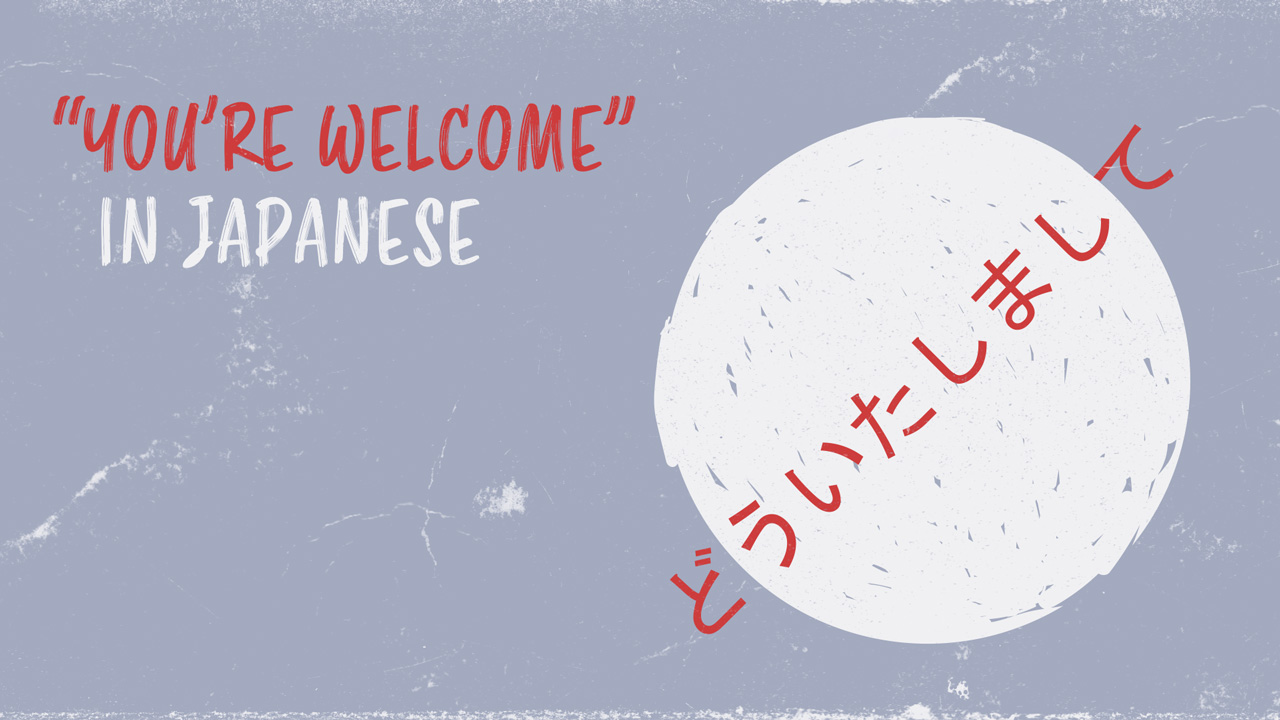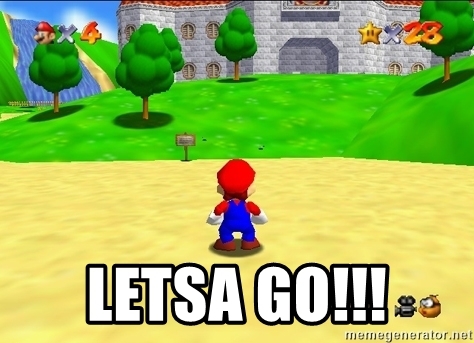You’re Welcome in Japanese: Learn How to Say It the Right Way!
How do you respond to “arigatou” in Japanese? With a simple dou itashimashite, or “you’re welcome” in Japanese!
The dictionary and beginner Japanese phrase checklists would have you believe that’s the only way to say “you’re welcome” in Japanese. But it’s actually a bit more complex than that!
You see, in Japanese, there are levels of speech. They are:
- Casual speech with friends, some family, and those close to you,
- Polite speech with people at the same level/age as you, such as co-workers or acquaintances,
- Honorific and humble speech, used when talking to superiors.
Because of this system, dou itashimashite might not be the best choice in all situations.
Of course, as a 外国人 (gaikokujin, “foreigner”), Japanese native speakers are often kind and forgiving of mistakes like this. They love the effort you put in to try to learn!
But, they won’t often correct you because that wouldn’t be polite.
So if you want to really learn to speak proper Japanese, you have to learn how to politely show your manners!
Table of contents
- What Does Dōitashimashite Mean? “You’re Welcome” in Japanese
- How to Say “You’re Welcome” in Japanese: Mario Can Help!
- “You’re Welcome” in Japanese: Casual
- “You’re Welcome” in Japanese: Polite Speech
- “You’re Welcome” in Japanese: Extra Formal Speech
- Replying With “Thank You” or “You Must Be Tired”
- Other Ways to Say “You’re Welcome” in Japanese Dialects
- “You’re Welcome” in Japanese — Say It The Right Way!
Make sure to also check out how to say “thank you” in Japanese and 150+ Japanese phrases you need to know.
Then come back to this article to learn how to respond to thank you in Japanese! I’ll wait, take your time.
Okay, ready now? Good. Let’s learn.
What Does Dōitashimashite Mean? “You’re Welcome” in Japanese
How do you say “you're welcome” in Japanese?
We covered this at the beginning: It’s dou itashimashite.
Sometimes, it’s romanized as dōitashimashite, with a long “o” to represent the double vowel sound “ou” in Japanese. Sometimes it’s douitashi mashite/dōitashi mashite.
Either way, it’s all the same word in Japanese, usually written only in hiragana: どういたしまして.
How to Say “You’re Welcome” in Japanese: Mario Can Help!
どういたしまして (dou itashimashite) is a bit of a mouthful and can be hard to remember if you’re new to Japanese.
So let me share a mnemonic that has helped me to never forget it for some 15+ years now.
(And I can’t take credit for this — my best friend, Sami, shared it with me from her sister who spent several years in Japan for the JET program!)
Here it is:
Think of Mario. Yep, the plumber dressed in red with the moustache. You can hear his voice right? “Let’sa go!”
Okay. Good.
Now picture you want to touch Mario’s glorious ‘stache. He doesn’t want you to though — so he says, “Donta toucha my moustache!”
Now say that fast: Dontatouchamymoustache.
Dou itashimashite.
Boom. You’ll never forget it now!
“You’re Welcome” in Japanese: Casual
Okay, that was helpful, right? But now… How do you respond to “thank you” in Japanese, when talking to someone you’re close with?
There are many ways to say “you’re welcome” in Japanese informal speech. Like in English, how we can say “yeah, no problem” or “don’t worry about it” or “I’m glad I was able to help.”
The simplest way to reply is either うん (un) or はーい (ha-i).
うん is informal speech for “yes”. はい is polite speech, but in this case with it drawn out as はーい, it’s a bit more informal.
You can also say 気にしないで (ki ni shinai de). It means “don’t worry” or “nevermind” and is used to kind of wave away thanks because it’s no big deal.
Here are some other casual ways to say “you’re welcome” in Japanese:
- とんでもない, tonde mo nai: “It’s no problem”
- 問題もない, mondai mo nai: “No problem” (similar to above)
- ううん, uun, or いいえいいえ, iie iie: “No”
- 別に, betsu ni: “Nothing” or “it was nothing”
- いいよ, ii yo: “It’s fine” or “no worries”
- いやいやいや, iya iya iya: “No, no, no…” (a bit of informal polite speech here, used to deny the need for praise/thanks)
- もちろん, mochiron: “Of course”
- よかった, yokatta: “I’m glad (it worked out)”
- いつでも声かけて, itsudemo koe kakete: “Call me anytime” or “always here to help”
- 全然, zenzen: “Not at all”
- 大丈夫, daijoubu: “It’s alright”
Like in English, sometimes these will be mix-and-matched to create phrases, like うん、別にいいよ (un, betsu ni ii yo) to say “teah, it’s fine (no worries)”.
“You’re Welcome” in Japanese: Polite Speech
Here are some polite ways to say “you’re welcome” in Japanese besides どういたしまして (dou itashimashite).
If you’re speaking to coworkers, you could say こちらこそ (kochirakoso). This means “likewise” or “I should thank you as well.” You’ll use this when you both worked on a project and want to show appreciation.
Another common phrase is 遠慮しないでください (enryo shinai de kudasai) or simply, 遠慮しないで (enryo shinai de). It means “don’t hesitate (to ask for help).”
You can also use いいえいいえ (iie iie) again here, as いいえ is the polite form of “no.”
If you both worked on a project and they said thank you, a great reply is お陰様で (okagesama de) means “all thanks to you.”
For example, you and your co-worker had a tight deadline to meet, and you both worked hard to meet it by staying late. Your coworker might say: “Thanks so much for staying late to help! We got it done!”
You could then reply お陰様で (okagesama de), “Thanks to you!” because they also helped achieve the goal.
Most of the time though, どういたしまして (dou itashimashite) is perfectly fine in polite situations like these.
“You’re Welcome” in Japanese: Extra Formal Speech
For more formal situations where you need to be extra polite — like to your boss, a company president, or someone older than you or higher status? Then you should use more formal phrases in honorific or humble speech.
Honorific speech is where you use certain verbs or grammar patterns to sound more respectful when speaking to or about the other person. We do this in English too, like how we say “passed away” instead of “died” to sound more respectful.
Humble speech is where you use certain verbs or grammar patterns to sound more humble when speaking about yourself to others.
Both are formal speech patterns often used together. They are called 敬語 (keigo) or 尊敬語(sonkeigo) for honorific speech and 謙譲語 (kenjougo) for humble speech.
Here are some phrases you can use:
- お役に立ててよかったです, oyaku ni tatete yokatta desu: “I’m glad it was helpful”
- とんでもございません, tonde mo gozaimasen: “Not at all”, “don’t mention it”
- 恐縮いたします, kyoushuku itashimasu: “I’m obliged” (See note below)
Note: 恐縮いたします (kyoushuku itashimasu) has different variations, such as 恐縮です (kyoushuku desu) and 恐縮でございます (kyoushuku de gozaimasu). This phrase is primarily used in written formal language (like an email to your boss).
Its actual translation means “excuse me” or “I’m sorry.” It can be used to express gratitude, make a request, or when complimented by someone of higher status.
What this means is, sometimes this phrase is used to be extremely apologetic. Other times, it’s used to sound humble and “reject” praise.
This is a nuance of Japanese culture. In Japanese, it’s better to sound humble and reject praise than to say something like “I’m honored”.
Keep in mind, even with humble speech, you shouldn’t overuse it or you’ll actually sound rude and condescending. Think like someone who humble brags about their achievements all the time!
Replying With “Thank You” or “You Must Be Tired”
Sometimes, especially in business situations, you wouldn’t reply with “you’re welcome.” Instead, you’d say ありがとうございます (arigatou gozaimasu) or お疲れ様でした (otsukaresama deshita).
ありがとうございます (arigatou gozaimasu) or just ありがとう (arigatou) is “thank you” in Japanese.
お疲れ様でした (otsukaresama deshita) or just お疲れ / お疲れ様 (otsukare / otsukaresama) means “you must be tired.” But it’s often used as a greeting or to say “thanks for your hard work.”
In situations where you’re complimented by a boss or coworker, you’d usually hear お疲れ様です (otsukaresama desu). It’s used to thank you for your work but also acknowledges your effort.
So in these situations, you can reply with ありがとう (arigatou), “thank you”, or say お疲れ様です (otsukaresama desu) back.
Other Ways to Say “You’re Welcome” in Japanese Dialects
Depending on where you travel in Japan, you may hear other dialects besides the standard Tokyo dialect.
Like anywhere else you go, there are dialects from around the country. In America, we have Northern accents, Boston accents, Southern accents, etc. And they all speak in a particular way.
Japan is no different.
Tokyo dialect is called 東京弁, toukyouben, or 標準語, hyoujungo — “standard language.” It’s also known as 共通語 (kyoutsuugo, “common language”).
Outside of Tokyo-ben, there’s Kansai-ben from the Osaka and Kyoto regions of Japan. This is kind of like the “Southern accent” of Japan.
Then there’s Hokkaido-ben from up north, Hiroshima-ben and Okinawa-ben from the south, and Toyama-ben from the west in the Chuubu region.
These dialects can sound vastly different to non-native speakers. They often have their own verb endings, slang, and set phrases that are completely different than 標準語 (hyoujungo), standard language.
In fact, Okinawa-ben (沖縄弁) is also called Ryukyuan because Okinawa was once the Ryukyu Kingdom with its own language. So it often doesn’t sound like Japanese at all — because it really isn’t! It’s a separate branch of the Japonic family of languages.
I’m still including Okinawan here though.
So here are some phrases for “you’re welcome” you may hear in other prefectures (states/regions) of Japan.
- ええから, ee kara: “Yeah,” “don’t worry about it,” Kansai-ben
- かまへん, kamahen: “No problem,” Kansai-ben
- いんや, inya: “No,” Hiroshima-ben
- なんもなんも, nanmo nanmo: “It was nothing,” Hokkaido-ben
- うんにゃ, unnya: “No,” Kyushu-ben
- なあん, naan: “No,” Toyama-ben
- がんちがでぃ, ganchigadi: “Don’t mention it,” “happy to help”, Okinawa-ben
- ぐぶりーさびたん, guburii sabitan: “You’re welcome,” “my pleasure,” Okinawa-ben
“You’re Welcome” in Japanese — Say It The Right Way!
There you have it, tons of ways to say “you’re welcome” in Japanese no matter what the situation.
It’s also a good idea to learn more about Japanese culture and manners to properly express gratitude. Some situations may call for a bow or other polite gesture to go along with these phrases.
Ready for your next Japanese lesson? Here are some ideas for your next steps:




Social